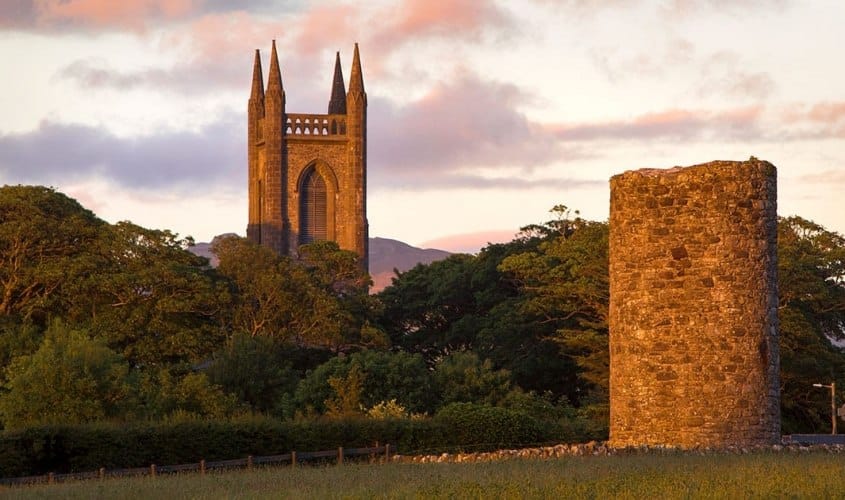Carrowmore Megalithic Cemetery
This is the largest cemetery of megalithic tombs in Ireland and is also among the country’s oldest and most important in Europe. Over 40 tombs are recorded all of which predate the pyramids of Egypt.
Creevykeel Court Tomb
This is one of the best examples of a court tomb in Ireland, it consists of a long, trapeze shaped cairn enclosing an oval court and a burial chamber of two compartments, dating from the 4th millennium BC.
Knocknashee
The ‘Hill of the Fairies’ located near Tubbercurry on a spectacular limestone table-top plateau commanding a widespread view over the north Connaught plain. The scale and commanding location of the site suggests that it was a regional centre from the Neolithic period down through pre-history.
Carrowkeel
Situated above the western shore of Lough Arrow is the impressive passage tomb cemetery of Carrowkeel located in the beautiful limestone upland of Bricklieve Mountains. There are 14 cairns here with a further 6 cairns extending to the west to Keshcorran Mountain, which is capped with a large cairn (also known as Fionn MacCumhaill’s seat).
Drumcliff Church, Round Tower and High Cross
This site is a monastic settlement, and also the burial place of the famous Irish poet W.B. Yeats. It’s importance dates from 574AD when St Colmcille founded a monastery here. The principle visible remains of the monument are the remains of Sligo’s only round tower, a high cross and a fragment of a plain high cross. The high cross dating from the 10th century has scenes from both the old and new Testaments.
Ballymote Castle
Richard de Burgo, the ‘Red Earl’ of Ulster, built the remains of this Anglo-Norman castle in AD1300, and it was the strongest fortress in Connaught. ‘The Book of Ballymote’ was probably compiled here c.1400AD.
Sligo Abbey
Known locally as the Abbey, this Dominican Friary was founded in 1252-3 by Maurice Fitzgerald. The site contains a great wealth of carvings including Gothic and Renaissance tomb sculpture, well preserved cloister and the only sculptured 15th century high altar to survive in any Irish monastic church. This enigmatic friary will inspire and enlighten it’s visitors. Access to site is by stone stairway.
Maeve’s Cairn
Overlooking Carrowmore megalithic cemetery on the summit of Knocknarea Mountain is the huge flat-topped cairn called ‘Miosgan Meadhbha’ (Maeve’s Cairn), 55m in diameter and 10m high. The name of the monument along with folklore suggests it was built for the mythical Maeve, the Iron Age Queen of Connaught. Walkers can access here via two designated walking trails.
Ballinafad Castle
This is located in the ancient road called the Red Earls road that linked Ballymote to Boyle. The design was modelled on the 13th century plan and stands four storeys high.
Ballindoon Abbey
The Abbey lies on the eastern shore of Lough Arrow. Inside the ruins of a 16th century Dominican Abbey there is an interesting monument to Terence McDonough. It is entirely built in the Middle English Gothic style.
Deerpark Court Tomb
This large and imposing monument is considered by many to be the finest example of a central court tomb in Ireland. It occupies a magnificent position on top of a limestone ridge overlooking Lough Gill and is surrounded by a panorama of mountain scenery.
















